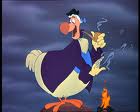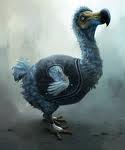
Alice's Adventures in Wonderland is an 1865 English children's novel by Lewis Carroll, a mathematics don at Oxford University. It details the story of a young girl named Alice who falls through a rabbit hole into a fantasy world of anthropomorphic creatures. It is seen as an example of the literary nonsense genre. The artist John Tenniel provided 42 wood-engraved illustrations for the book.

Alice Pleasance Hargreaves was an English woman who, in her childhood, was an acquaintance and photography subject of Lewis Carroll. One of the stories he told her during a boating trip became the classic 1865 children's novel Alice's Adventures in Wonderland. She shared her name with "Alice", the story's heroine, but scholars disagree about the extent to which the character was based upon her.
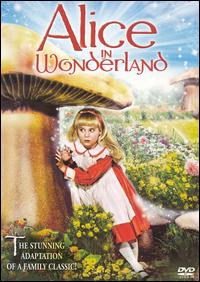
Alice in Wonderland is a 1985 American two-part made-for-television adventure family fantasy musical film of Lewis Carroll's books Alice's Adventures in Wonderland (1865) and Through the Looking-Glass (1871). An Irwin Allen production, it used a huge all-star cast of notable actors and actresses. The title role was played by Natalie Gregory, who wore a blonde wig for this miniseries. Alice in Wonderland was first telecast December 9, 1985, and December 10, 1985, at 8:00pm EST on CBS.

The White Rabbit is a fictional and anthropomorphic character in Lewis Carroll's 1865 book Alice's Adventures in Wonderland. He appears at the very beginning of the book, in chapter one, wearing a waistcoat, and muttering "Oh dear! Oh dear! I shall be too late!" Alice follows him down the rabbit hole into Wonderland. Alice encounters him again when he mistakes her for his housemaid Mary Ann and she becomes trapped in his house after growing too large. The Rabbit shows up again in the last few chapters, as a herald-like servant of the King and Queen of Hearts.

Alice in Wonderland is a 1951 American animated musical fantasy comedy film produced by Walt Disney Productions and released by RKO Radio Pictures. It is based on Lewis Carroll's 1865 novel Alice's Adventures in Wonderland and its 1871 sequel Through the Looking-Glass. The production was supervised by Ben Sharpsteen, and was directed by Clyde Geronimi, Wilfred Jackson, and Hamilton Luske. With the voices of Kathryn Beaumont, Ed Wynn, Richard Haydn, Sterling Holloway, Jerry Colonna, Verna Felton, J. Pat O'Malley, Bill Thompson, and Heather Angel, the film follows a young girl Alice who falls down a rabbit hole to enter a nonsensical world Wonderland that is ruled by the Queen of Hearts, while encountering strange creatures, including the Mad Hatter and the Cheshire Cat.
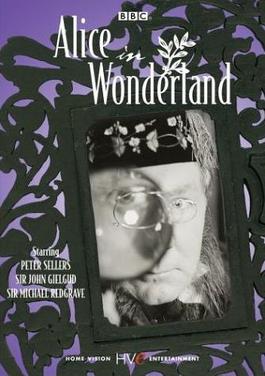
Alice in Wonderland is a 1966 BBC television play, shot on film, based on Lewis Carroll's 1865 book Alice's Adventures in Wonderland. It was adapted, produced and directed by Jonathan Miller, then best known for his appearance in the satirical revue Beyond the Fringe.
Bill the Lizard is a fictional character appearing in Lewis Carroll's 1865 novel Alice's Adventures in Wonderland.

The Caterpillar is a fictional character appearing in Lewis Carroll's 1865 book Alice's Adventures in Wonderland.
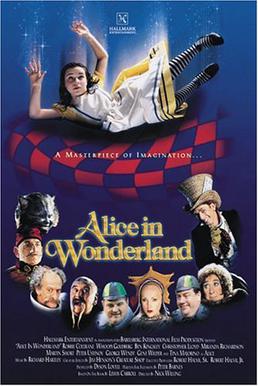
Alice in Wonderland is a 1999 made-for-television film adaptation of Lewis Carroll's books Alice's Adventures in Wonderland (1865) and Through the Looking-Glass (1871). It was first broadcast on NBC and then shown on British television on Channel 4.

The Looking Glass Wars is a series of three novels by Frank Beddor, heavily inspired by Lewis Carroll's 1865 novel Alice's Adventures in Wonderland and its 1871 sequel Through the Looking-Glass. The premise is that the two books written by Lewis Carroll are a distortion of the "true story".

Fushigi no Kuni no Alice is an anime adaptation of the 1865 novel Alice's Adventures in Wonderland which ran on the TV Tokyo network and other local stations across Japan from October 10, 1983 to March 26, 1984. The series was a Japanese-German co-production between Nippon Animation, TV Tokyo and Apollo Films. The series consists of 52 episodes, however, only 26 made it to the US.
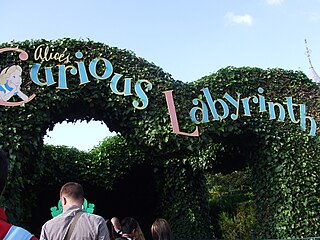
Alice's Curious Labyrinth is a hedge maze attraction at the Disneyland Park within Disneyland Paris. It opened in 1992 with the Park, and belongs to the British part of Fantasyland. A similar maze attraction, based on both the 1951 and 2010 Disney film adaptations of Lewis Carroll's Alice in Wonderland, exists at Shanghai Disneyland Park.

The Knave of Hearts is a character from the 1865 book Alice's Adventures in Wonderland by Lewis Carroll.
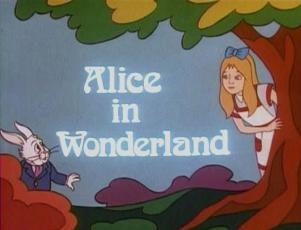
Alice in Wonderland is an Australian 51-minute direct-to-video animated film from Burbank Films Australia originally released in 1988.

Alice in Wonderland is a 1949 French film based on Lewis Carroll's 1865 fantasy novel Alice's Adventures in Wonderland. Directed by Dallas Bower, the film stars Carol Marsh as Alice, Stephen Murray as Lewis Carroll, and Raymond Bussières as The Tailor. Most of the Wonderland characters are portrayed by stop-motion animated puppets created by Lou Bunin.

Alice in Wonderland is a 1915 American silent film adaptation of Lewis Carroll's classic 1865 novel, Alice's Adventures in Wonderland, directed and written by W. W. Young and starring Viola Savoy as Alice.

Pat is a fictional character in Lewis Carroll’s 1865 book Alice's Adventures in Wonderland. He appears in the chapter "The Rabbit Sends in a Little Bill." He works for the White Rabbit like his friend Bill the Lizard. Carroll never gives any description of the character other than being a gardener, and his species has been widely debated, with evidence showing he is likely to be a monkey or a guinea pig.

Wonderland is the setting for Lewis Carroll's 1865 children's novel Alice's Adventures in Wonderland.
Alice in Wonderland and Through the Looking-Glass is a 2001 stage adaptation of Lewis Carroll's 1865 novel Alice's Adventures in Wonderland, and the 1871 novel Through the Looking-Glass. It was written by Adrian Mitchell. A 2 hour adaptation of both of Carroll's novels, it holds the distinction for currently being the most comprehensive stage adaptation of the books yet made, with the endings of both novels intact and only minor changes made for theatrical staging reasons.


